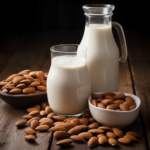Planks are a staple in many exercise routines, praised for their ability to sculpt and strengthen the core. But beyond building a rock-solid midsection, do planks actually help you burn significant calories? Let’s dive into the truth about this popular exercise and explore how many calories you can expect to burn while holding a plank.
Calorie Burning During Planks
While planks are a fantastic exercise for strengthening your core, they don’t burn a significant amount of calories compared to other exercises.
A typical person weighing 150 pounds burns around 2 to 5 calories per minute while holding a plank position. This means that a 10-minute plank would only burn about 20 to 50 calories.
Factors Influencing Calorie Burning During Planks:
The calorie burn during planks is influenced by various factors, including body weight, duration of the hold, and individual metabolic rate. Let’s delve deeper into each of these factors to understand how they contribute to the calorie-burning potential of planks:
- Body Weight:
- Body weight plays a significant role in determining the number of calories burned during planks.
- Individuals with higher body weight typically expend more energy during planks as they engage additional muscles to support their weight.
- The extra effort required to maintain proper form and stability under higher body weight conditions leads to increased calorie expenditure.
- Duration of the Hold:
- The duration for which a plank is held directly impacts the calorie burn.
- Longer plank holds require sustained muscle engagement, leading to greater energy expenditure over time.
- As the muscles work harder to maintain the plank position, they consume more energy, resulting in higher calorie burn.
- Gradually increasing the duration of plank holds can progressively enhance calorie burning during the exercise.
- Individual Metabolic Rate:
- Each individual has a unique metabolic rate, which influences the rate at which they burn calories.
- Metabolic rate is affected by factors such as age, gender, muscle mass, and overall fitness level.
- Individuals with a higher metabolic rate tend to burn calories more efficiently, resulting in greater calorie burn during planks.
- Additionally, regular exercise, including strength training exercises like planks, can increase metabolic rate over time, leading to enhanced calorie burning during workouts.
Here’s a table summarizing the estimated calorie burn for different plank durations and body weights:
| Body Weight | 1 Minute | 5 Minutes | 10 Minutes |
|---|---|---|---|
| 120 lbs | 1.6 – 4 calories | 8 – 20 calories | 16 – 40 calories |
| 150 lbs | 2 – 5 calories | 10 – 25 calories | 20 – 50 calories |
| 180 lbs | 2.4 – 6 calories | 12 – 30 calories | 24 – 60 calories |
Beyond Calorie Burning – Benefits of Plank
While planks may not be the best calorie-burning exercise, they offer several other benefits, such as:
- Core Strengthening: Planks target multiple muscle groups simultaneously, including the rectus abdominis, transverse abdominis, obliques, and lower back muscles. By engaging these muscles, planks help build a stronger and more stable core, which is essential for maintaining proper posture and spinal alignment.
- Improved Posture: Strengthening the core muscles through planks helps support the spine and improve overall posture. By strengthening the muscles that support the spine, planks can alleviate strain on the back and reduce the risk of developing poor posture-related issues, such as lower back pain and rounded shoulders.
- Enhanced Stability and Balance: Planks require maintaining a stable position for an extended period, which helps improve overall stability and balance. By engaging the core muscles and stabilizing the body, planks train the body to maintain proper alignment and balance, reducing the risk of falls and injuries.
- Reduced Risk of Injury: Strong core muscles contribute to better stability and movement control, reducing the risk of injury during physical activities and sports. By strengthening the muscles that support the spine and pelvis, planks can help prevent common injuries, such as strains and sprains.
- Improved Athletic Performance: A strong core is essential for optimal athletic performance in various sports and activities. By enhancing core strength, planks can improve overall athleticism, agility, and power, leading to better performance in activities like running, cycling, and weightlifting.
- Functional Strength: Planks engage the core muscles in a way that mimics real-life movements, making them a functional exercise that translates to everyday activities. By improving core strength and stability, planks can enhance performance in tasks like lifting heavy objects, bending, and twisting.
- Versatility and Accessibility: Planks can be modified and adapted to suit individuals of all fitness levels and abilities. Whether you’re a beginner or an advanced athlete, there are various plank variations and progressions to challenge and engage the core muscles effectively.
- Time Efficiency: Planks are a time-efficient exercise that can be performed almost anywhere with no equipment required. A few minutes of plank exercises each day can yield significant benefits for core strength, making them an ideal addition to any workout routine.
If you’re looking to lose weight, it’s important to combine planks with other exercises that burn more calories, such as cardio and strength training.
Conclusion
In conclusion, while planks may not burn as many calories as some dynamic exercises, they remain a valuable component of any fitness regimen. Their ability to strengthen core muscles, improve posture, and enhance stability makes them indispensable for overall health and well-being. We encourage readers to incorporate planks into their workout routine alongside other exercises for a balanced approach to fitness.







